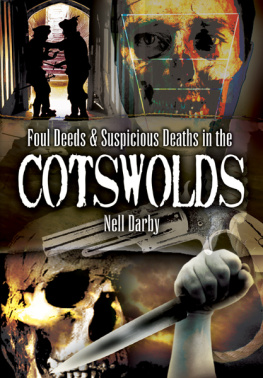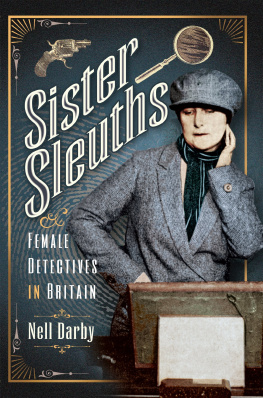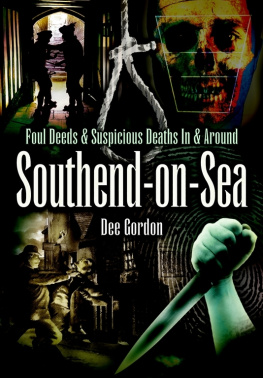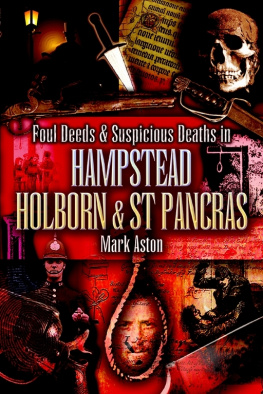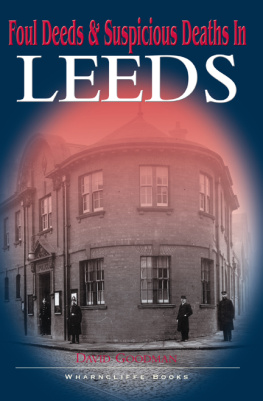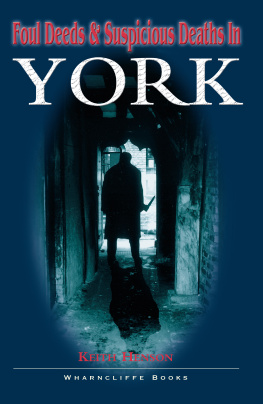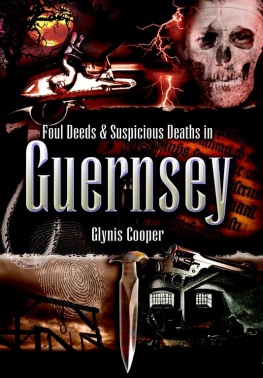

First published in Great Britain in 2009 by
Wharncliffe Local History
an imprint of
Pen & Sword Books Ltd
47 Church Street
Barnsley
South Yorkshire
S70 2AS
Copyright Nell Darby 2009
ISBN 978 1 84563 074 4
PDF ISBN: 9781783037780
EPUB ISBN: 9781783037803
PRC ISBN: 9781783037797
The right of Nell Darby to be identified as author of this work has been
asserted by her in accordance with the Copyright, Designs and Patents
Act 1988.
A CIP catalogue record for this book is available from the British Library.
All rights reserved. No part of this book may be reproduced or transmitted
in any form or by any means, electronic or mechanical including photocopying,
recording or by any information storage and retrieval system,
without permission from the publisher in writing.
Typeset in 11/13pt Plantin by
Mac Style, Beverley, East Yorkshire
Printed and bound in the UK by
CPI
Pen & Sword Books Ltd incorporates the imprints of Pen & Sword
Aviation, Pen & Sword Maritime, Pen & Sword Military,Wharncliffe Local
History, Pen and Sword Select, Pen and Sword Military Classics and
Leo Cooper.
For a complete list of Pen & Sword titles please contact
PEN & SWORD BOOKS LIMITED
47 Church Street, Barnsley, South Yorkshire, S70 2AS, England
E-mail:
Website: www.pen-and-sword.co.uk
Contents
Introduction
T he Gloucestershire Cotswolds are full of picture postcard villages, thatched cottages and village greens. They look idyllic, and attract thousands of tourists every year. But every area has its dark heart. These pretty villages and towns have been the focus of all sorts of crimes in history from murder to corruption, seduction to infanticide. This book sets out to show the uglier face of the Cotswolds, to explore the frustrations faced by villagers and how they reacted to the changing face of Britain during the eighteenth and nineteenth centuries.
Politics features strongly; Cotswolds residents, it seems, have always been interested in politics at both a local and national level. Drink also features heavily even small villages often had their own village pub, and this would be the centre of a community. After a hard days work in the fields, many agricultural workers would end up in the pub for a convivial chat, a pipe and a drink but they frequently drank too much, and this could lead to trouble.
Of course, the Cotswolds straddle three main counties Gloucestershire, Oxfordshire and Wiltshire but Gloucestershire is at their heart, so I have focused on this area. Some of the stories from the Oxfordshire Cotswolds have been covered by Carl Boardman in his book in this series I recommend that to those keen to look at stories from over the border. I have also taken the liberty of including a tale from Cheltenham in here, although it is not strictly in the Cotswolds; but it provides an urban comparison to the largely rural stories here. Cirencester may be the main town of the Cotswolds, and it figures prominently in this book; but by no means can it be described as urban. The inclusion of Cheltenham offers the reader a better balance of stories.
Searching through the archives, I found many more fascinating Gloucestershire stories that would been ideal for this book. However, many stories come from the local press, who, in the eighteenth century, were more interested in the salacious details and not so much in where the story was actually located. So it is with regret that I cant include the story of Anne Williams, who in 1752 poisoned her husband with white mercury because she was in love with another man. Her husband survived long enough to point the finger at his wife, and after his death, she was burned at the stake in Gloucester. However, I cant determined whereabouts in Gloucestershire she was from, so she hasnt got her own chapter here although I couldnt resist mentioning the story in passing in one of the chapters. Other events didnt interest the class-conscious press as much as they should have; so the murder of Abigail Biddle by tinker William Loveridge in Bourton-on-the-Water in 1829 only merited the briefest of mentions in the local paper, as it was seen as the result of an argument between rival gypsy factions, together with a short entry in the calendar of prisoners not enough to base a chapter on, although the story shows how the traveller community has had a long history in the Cotswolds, and its own share of tragedy.
I would like to thank the various archives that have provided me with invaluable help and advice. Thanks are particularly due to The National Archives, National Maritime Museum, Gloucestershire Archives, Oxfordshire Studies, and Helen Hills at the Rare Book Department of Cambridge University Library.
I would finally like to thank John, Jake and Eva Darby for their patience in bearing with me whilst I disappeared off to the archives for days at a time this book is for them.
C HAPTER
Nothing to Convict Them: The Murder of the Frenchman
1834
F rancois Jacques Rens was a Frenchman who came to stow-on-the-Wold to work and live a quiet English life. He ended up a victim of violence, robbed and murdered for his gold watch. He was also a victim of the economic misery, boredom and envy that permeated the lower echelons of stow society in the nineteenth century.
Rens his name anglicized by the locals to Francis James was originally a businessman, a merchant working in the Netherlands. After his business failed, he moved to England, working initially as a French teacher. He came to be acquainted with Mr Pole, of Wyck Hill House near stow, who was a director of the Bank of England and treasurer of the stow Provident Bank. Pole managed to secure Rens the position of actuary of the bank in around 1827, and Rens duly moved to stow. He was, by all accounts, an upstanding member of his adopted community, teaching French to the local children in his spare time and being, in the words of the Oxford Journal, of agreeable manner. He was seen as fulfilling his job at the bank with unprecedented integrity.
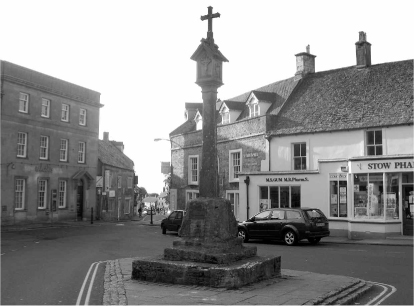
Market Square, Stow Rens stayed at the George Inn here. The author
He was also a creature of habit; many locals knew that after his evening meal in the George Inn in Market Square, Rens would go for a walk around town, often to the fishpool, returning to his lodgings with the Rogers family in Market Square in time for a cup of tea at 8.00 pm. Unfortunately, his regular habits meant that many people knew where they could find him and when.
On the night of his murder, Friday, 10 March 1834, for example, his landlords daughter, Martha Rogers, had seen him leave for his walk at 7.30 pm. He had told her that he was only going for a short walk, and would be back soon. She knew that he usually drank tea at 8.00 pm, so would be back by then. At 7.45 pm, Rens was spotted walking down Back Lane by local carter Henry Sutton, who thought he was heading towards the fishpool. Rens was a large man, described as stout or fat by locals. He was an instantly recognizable figure.
Only minutes after Sutton spotted Rens, whilst he was near the fishpool, Rens was killed. He had been hit over the head, from behind. Initial reports stated that he had been struck with a blunt iron instrument. Rens still had the old-fashioned habit of wearing a wig, and the force of the blow to his head had sent both his hat and wig falling to the ground. His gold watch and purse were both missing.
Next page
